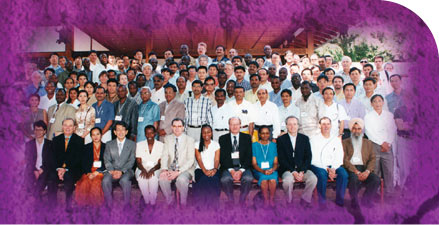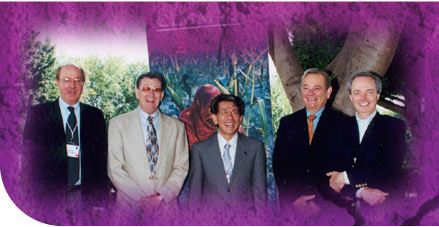
May, 2004
 Drought, arguably the greatest threat to food production worldwide, was the focal point of a high-level, weeklong workshop supported by the Rockefeller Foundation and CIMMYT, commencing May 24, in Cuernavaca, Mexico.
Drought, arguably the greatest threat to food production worldwide, was the focal point of a high-level, weeklong workshop supported by the Rockefeller Foundation and CIMMYT, commencing May 24, in Cuernavaca, Mexico.
Approximately 140 scientists from Asia, Africa, and Latin America–working on various aspects of drought tolerance in plants–met to present their research results and discuss ways forward with their colleagues. The meeting, entitled the “Resilient Crops for Water-Limited Environments workshop,” looked mainly at maize, rice, and wheat, which account for more than half of the calories consumed by people in the developing world, and are the basis for their food security and livelihoods. Scientists comprehensively addressed drought, looking at drought tolerance from the ground-level perspective of incorporating farmer participation into varietal development, to the heights of molecular genetics, and how plant genes interact and respond to water stress.
The workshop was opened by Dr. Gordon Conway, President, The Rockefeller Foundation, and Dr. Masa Iwanaga, Director General of CIMMYT.
Dr. Conway, in his address, declared a “war on drought.” He explained that 70% of the one billion African and Asians in extreme poverty (less than $1/day) live in rural areas, and that agriculture is their primary route to improved nutrition and income. For developing world farmers, drought wreaks havoc, forcing them to sell off their meager assets, such as livestock or their own off-farm labor, and forego health care and their children’s education. Often the results are far more dire: hunger, malnutrition, and even starvation. In the 1960s and 70s, the Green Revolution saved hundreds of millions from famine, said Conway, but many living in less favored environments were bypassed as much of the success was based on adequate water and soil fertility. What is needed now is a Doubly Green Revolution to lift up the African and Asian smallholders left behind. Drought tolerant crops are key to this cause .
Dr. Iwanaga recounted the long and close relationship between CIMMYT and The Rockefeller Foundation, dating back to the pre-CIMMYT era and the Foundation’s support for Norman Borlaug’s work on semi-dwarf cereals, leading to the Green Revolution. That success led to the birth of CIMMYT and the CGIAR, with considerable backing again provided by the Foundation.
Even today, Dr. Iwanaga pointed out, the Foundation remains one of CIMMYT’s most important supporters, both financially, but more importantly, in the confluence of the Foundation’s goals and CIMMYT’s research activities. Both institutions see drought tolerant crops, soil fertility, and the development of seed markets and distribution systems as essential pillars for improving productivity for smallholder farmers, thereby providing a path out of poverty to better livelihoods for the developing world’s rural poor.
Extended abstracts from the workshop are forthcoming and will be made available to the public before year’s end.


